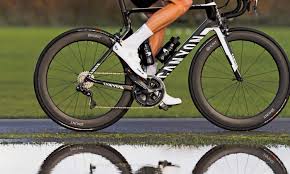Introduction
Quick Navigation
Every piece of equipment designed to transport human beings must have two major components; acceleration and stoppage. Without these two features, you are likely not to move at all or involve yourself (and someone else in an accident). If you look at motor vehicles, the accelerator is designed to increase your speed, and the brake is designed to reduce the rate. When the brake fails, you would require a lucky chain of events for you to leave the road without an accident. Even though bicycles are not as sophisticated as motor vehicles, the same principles still apply. You can cover great distances by pedaling your bike, but the brakes must be working if you are to enjoy your ride and come back unscathed. All bicycles have brakes, but all the brakes are the same. There are three main types of bicycle brakes: Disc brakes, Rim brakes, and Drum brakes. All these brakes have their unique features, advantages, and disadvantages. If you are looking to get a bicycle sometime soon, then knowing about brakes will help you decide which one suits your riding style. In this article, we are going to take a look at Disc brakes and Rim brakes. Enjoy!
Disc Brakes
A disc brake is a rotor/metal disc attached to your frame’s wheel hub and designed to rotate with the wheel. The braking system works by attaching calipers and pads to the frame so they can squeeze the rotor when you brake. Disc brakes can work either mechanically or hydraulically, and they are mostly found on mountain bikes.
Advantages of Disc Brakes
- Designed for all weather conditions
The significant advantage of disc brakes is that they function effectively in any weather condition. The braking system is farther from the ground, and track debris like mud will have a hard time clogging your braking system. Disc brakes are also made of materials that dissipate heat better. The rotor also provides holes that allow any debris or buildup to flow freely back to the ground.
- Compatible with front and rear suspension
Comfortability is halfway assured with disc brakes. Disc brakes are designed to allow for both front and rear suspension. You can smoothly ride on rough terrains with reduced impact. This is why most mountain bikes are made with disc brakes.
- Cheaper and more comfortable to replace
Even though the disc brakes are built for durability, all disc brakes will eventually wear out, and you have to replace them. This process is more manageable with disc brakes because they are affordable and they are easier to replace than other kinds of brakes.
- Allows for greater braking power
Disc brakes are often associated with greater stopping power, and they are suitable for long, rough terrains. When you actuate the disc brake, many components go into action, and this forces your bicycle to stop regardless of obstacles or speed.
Disadvantages of Disc Brakes
- Heavyweight structure
The extra materials and equipment that make up the disc brake and allows for its advanced stopping power also add to the bicycle’s average weight. If you favor lightweight bikes, then you might want a bike with another brake type
Rim Brakes
Rim brakes get their name from their mechanism. The brakes work by applying friction pads to the rotating wheel’s rim, which slows down the bicycle. The brake mechanism is triggered by a lever attached to the handlebar.
Advantages of Rim Brakes
- Affordable
Rim brakes are cost-efficient. They don’t usually require much money to buy or maintain. If you use a bike with rim brakes, then you can be sure of affordability.
- Lightweight structure
Since rim brakes are attached to your rotating wheel’s rim, they don’t usually take up much space, which allows for a lightweight structure. You can smoothly ride, increase speed, and maneuver with rim brakes.
- Easy to maintain
Rim brakes are relatively easy to maintain. All you have to do is clean them regularly and ensure that debris is not stuck in there for an extended period. In case they get damaged, rim brakes are also easy to repair.
- Minimum heat buildup
Heat buildup is bound to happen regardless of which brake type you are currently using. However, with rim brakes, heat buildup is kept at the barest minimum.
- Designed for speed
Rim brakes are more aerodynamic than other types of brakes. Since they are lightweight, you can quickly increase your speed as you like. However, make sure your trail is a clear, smooth road.
Disadvantages of Rim Brakes
- Not built for all weather conditions
Rim brakes are best for long smooth roads. If you attempt to ride them on muddy or wet surfaces, the brakes will not function effectively.
- Requires regular maintenance
Although the rim brakes are easy to maintain, they require regular check-ups and maintenance. They are susceptible to wear and tear, and if you don’t check them regularly, they might go bad on the road.
Significant Difference between Disc Brakes and Rim Brakes
The significant difference between disc brakes and rim brakes is where the force is applied when you brake. Rim brakes have calipers designed to apply pressure on the rim’s outer edge, while disc brakes are designed to break with a rotor’s help. The rotor is mounted to the hub of the bicycle.
Another difference is the braking process. Rim brakes are made with a cable system that closes the caliper on the rim when you brake, while disc brakes mostly use hydraulics.
Conclusion
Cycling is one of the best outdoor sports, and that is only made possible because of the intricate design of bicycles. As a cycler, you need to know every detail of your bike. One significant element you should take note of is the brake. The brake will determine the smoothness and performance of your ride to a large extent. If you are unsure about what brake you want your bicycle to have, this article has provided you with sufficient information to help you make a well-informed decision. We advise that you take a critical look at how these brakes (disc and rim) match up to your riding style and your trail. Cheers!

